04 Jan 2008
Pictures from the communal server posted during the month of December.
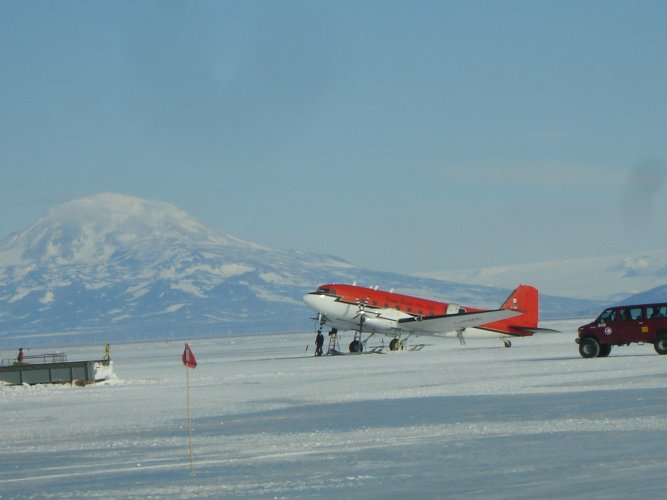
This photo shows the Basler DC-3 aircraft before it crashed in December. Despite the heavy internal modifications and the upgraded turboprop powerplants, the aircraft's appearance differed little from the DC-3s that have been flying since the 1930s or 40s. Photo by Jo Jo Schwartz. Images of the wrecked Basler are available here and here.
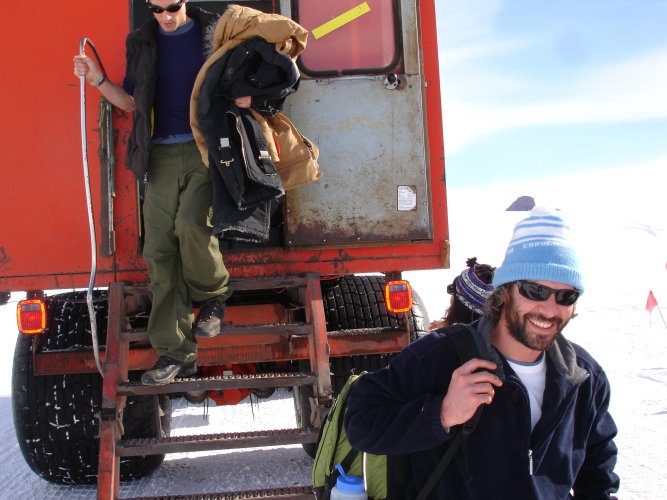
All winter-overs, all field personnel, and many folks who only work in town, are required to complete a winter survival course called the Snowcraft I School, more popularly known as the Happy Camper course. The course teaches familiarization with the survival bags packed in all field vehicles, and students are required to spend the night outside. Many of my friends attended the course during WinFly and early Mainbody and returned complaining of frigid conditions and bitchy classmates. I wasn't required to take the course, so I waited until the weather warmed up before asking to go. I managed to join a course held during a week of brilliant sun and air temperatures of 45F. Above I can be seen disembarking the Delta vehicle that transported us to our camping site. Photo by Jo Jo Schwartz.
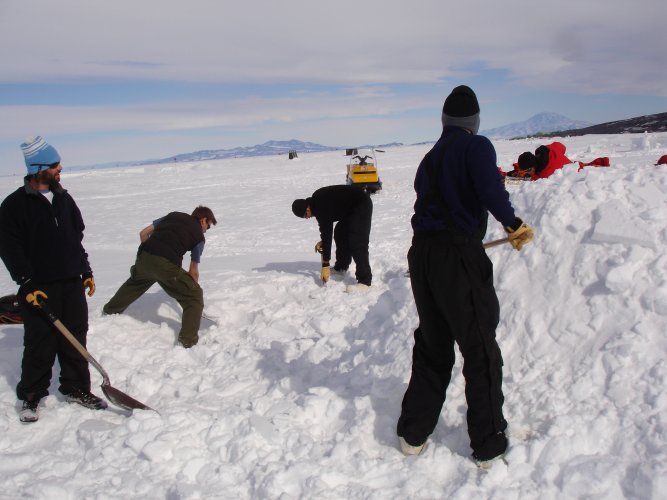
We built wind barriers, set up tents and build survival shelters such as the igloo-like shelter we can be seen building in the photo above. I spent the night in one of these shelters built and left standing by a previous class, and got 11 hours of sleep. As might be deduced from my bare arms as seen above, I also got a great tan from the course. Photo by Jo Jo Schwartz.
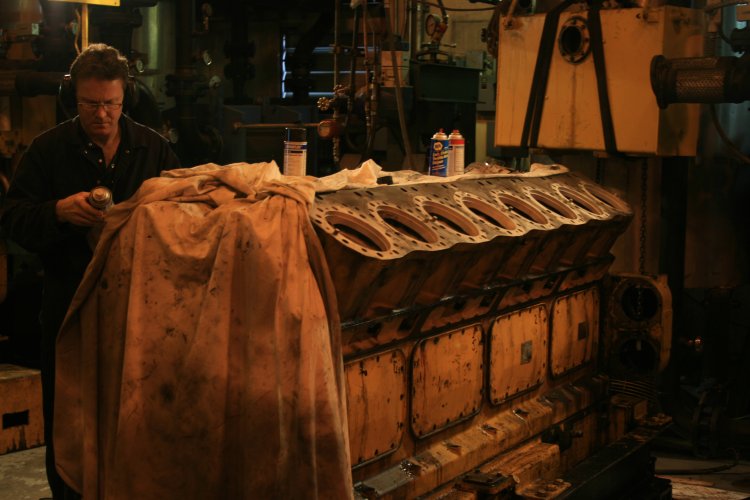
More photos of the engine rebuilds performed by the Kiwi mechanics. Shown above is Chris checking for cracks in the engine block. Photographer unknown.
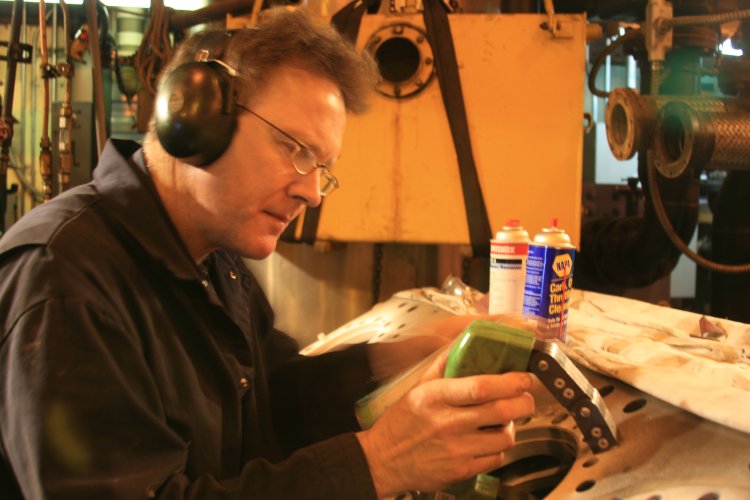
Chris again checking for cracks. Photographer unknown.

Last week a dump truck accidentally drove under a power line with its bucket in the air. No one was hurt, but primary power to a significant chunk of the station was lost for several days. Photographer unknown.

It took the linemen several days to make the repairs, largely because most of the spare high power supplies had been shipped back to New Zealand to reduce the amount of storage space required here. Photographer unknown.
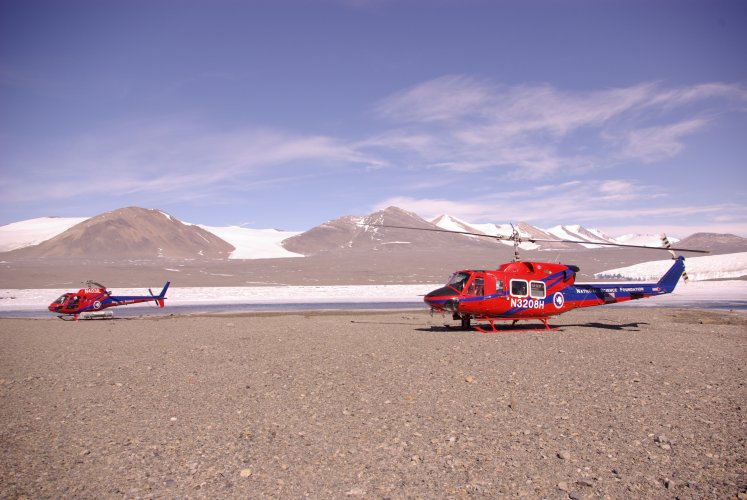
Portrait of the two models of helicopters based out of McMurdo Station. On the left is a Eurocopter A-Star, and on the right is a Bell 212 Twin Huey. The A-Stars have generally higher performance than the Twin Hueys, but the Hueys can carry a much heavy payload. This photo was taken somewhere in the Dry Valleys. Photographer unknown.
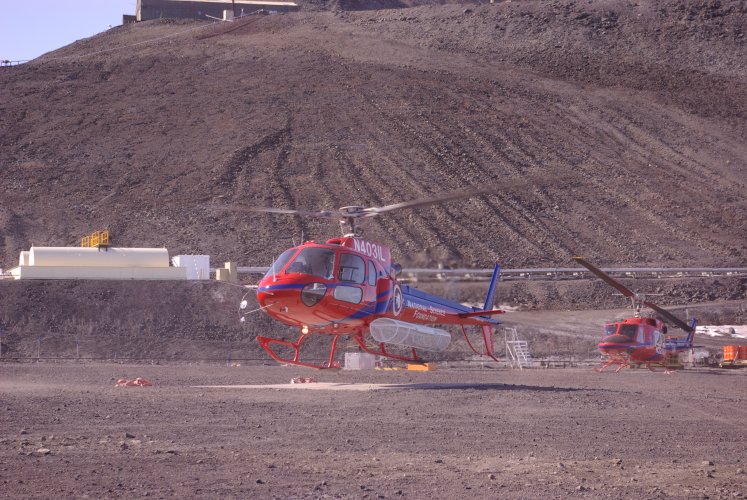
One of the A-Stars at the McMurdo heliport. Photographer unknown.
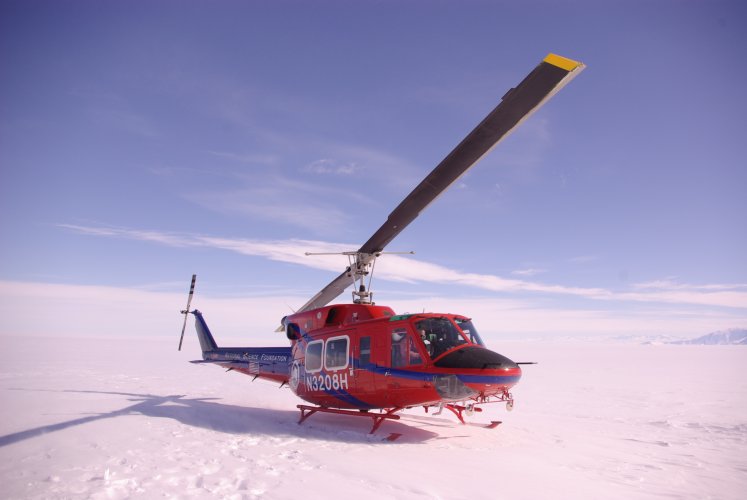
Twin Huey somewhere in the field. Photographer unknown.
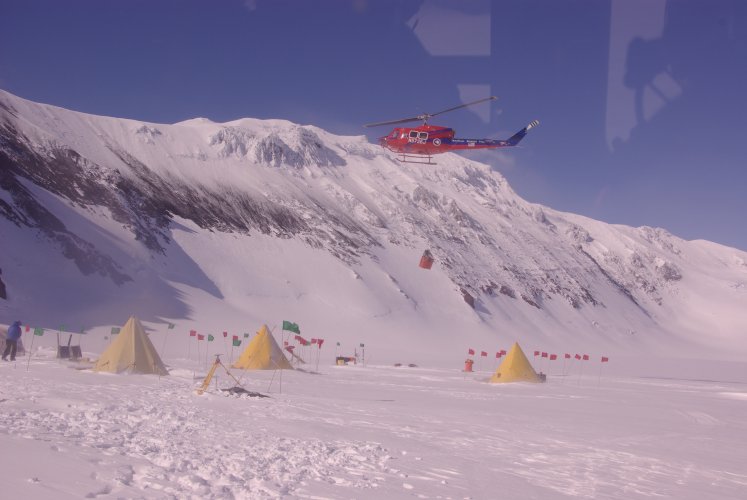
Twin Huey delivering supplies to a field camp. The yellow tents seen are called Scott tents, named for the famed Antarctic explorer. The tents are designed to withstand 100+kt winds, so having a helicopter operate nearby doesn't present any problems. Photographer unknown.
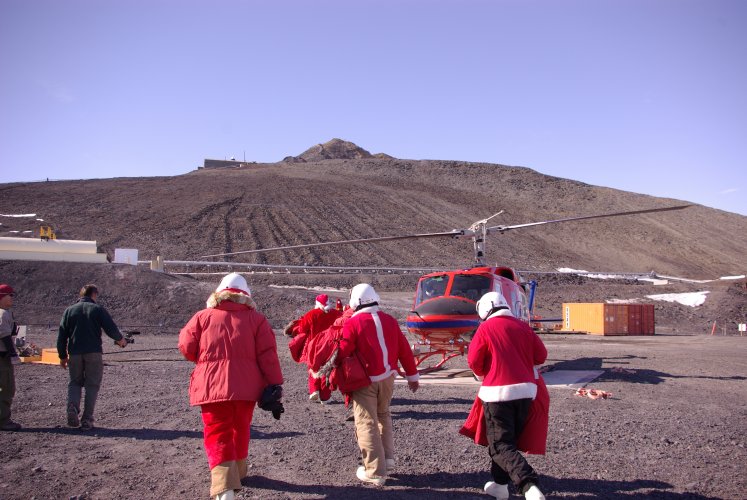
For Christmas, several McMurdo residents dressed up as Santa and his elves and flew out to several field camps to spread holiday cheer. Photographer unknown.
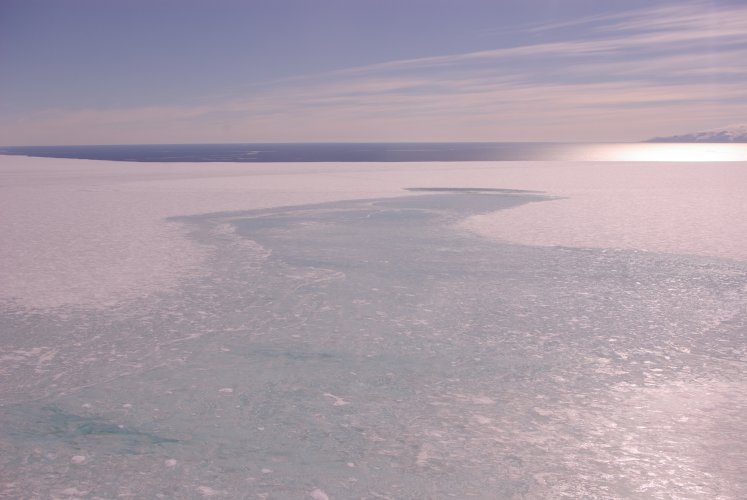
They flew across the sea ice adjacent to the island. Photographer unknown.
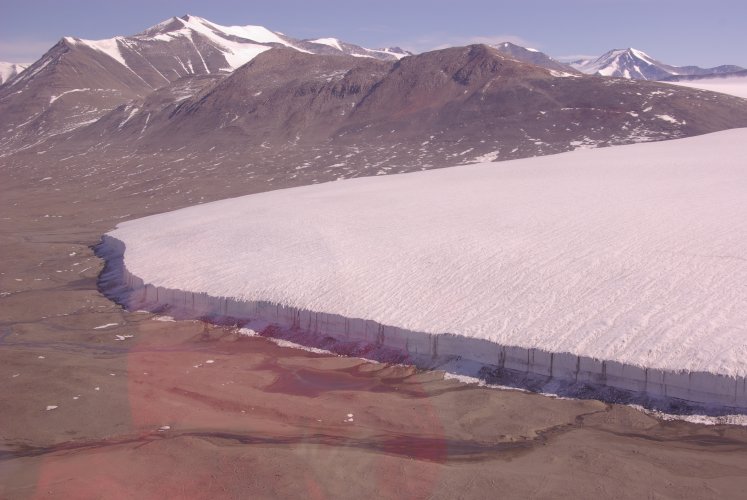
They continued across the mainland, above glaciers. Photographer unknown.
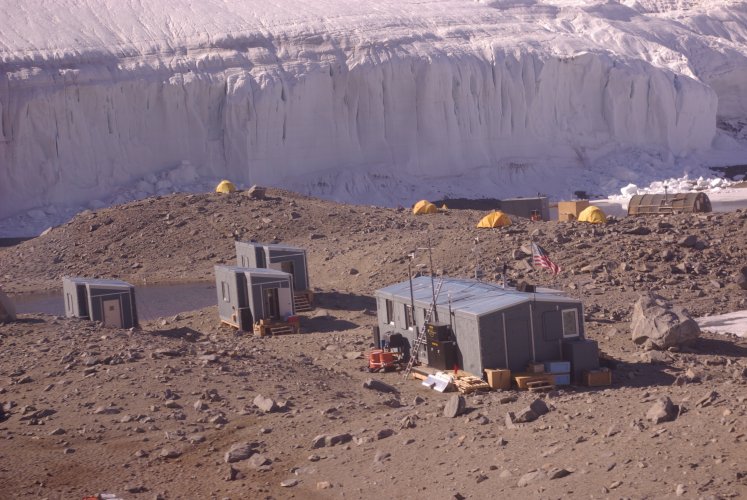
The research station at Lake Hoare. Photographer unknown.
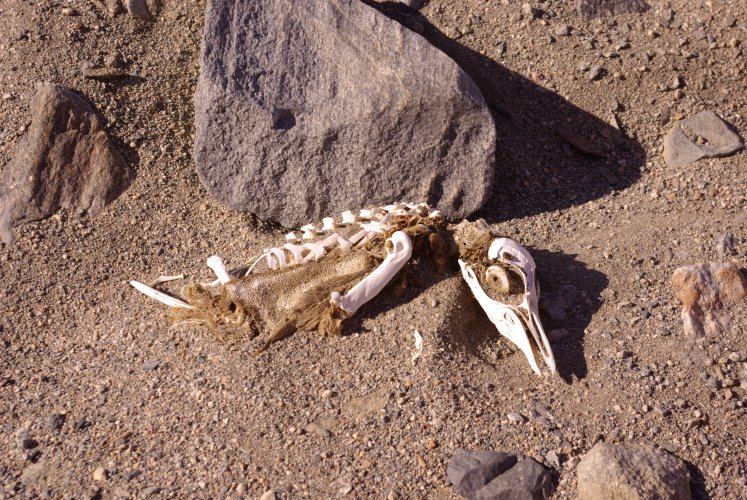
Very dead penguin in the Dry Valleys. Photographer unknown.
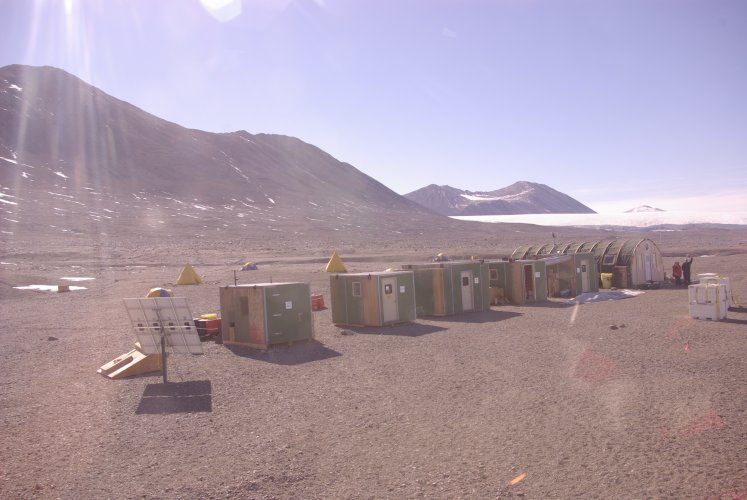
Another Dry Valleys research station. Photographer unknown.
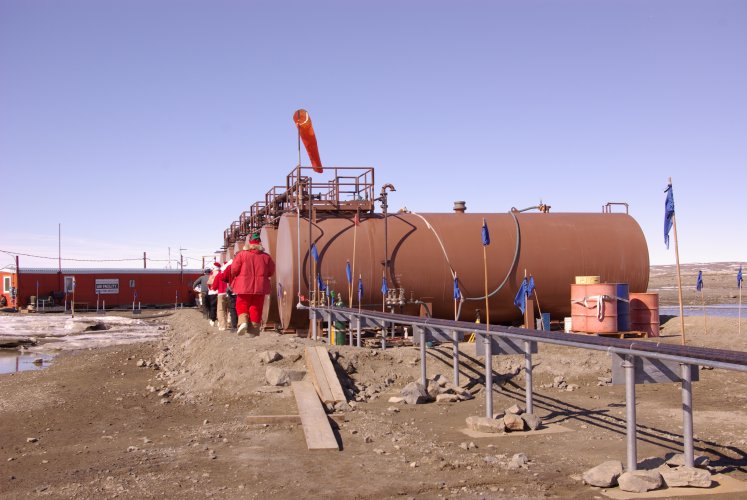
Approaching the Marble Point outpost. Marble Point is on the mainland and serves as a Dry Valleys logistics base and helicopter refueling station. Photographer unknown.
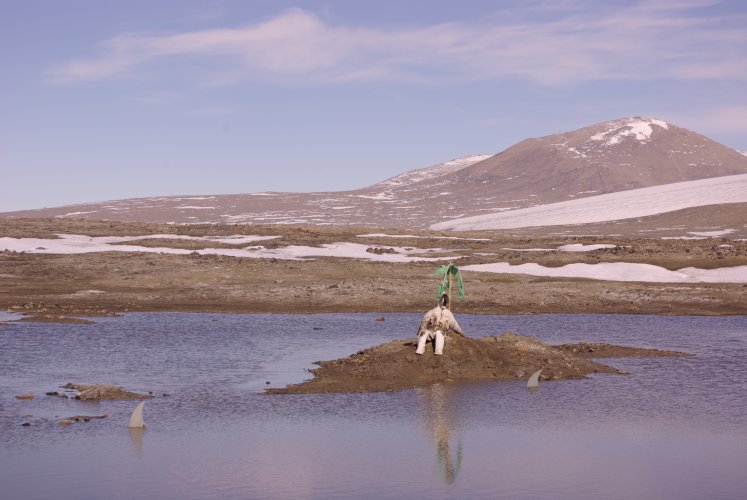
There's not much to do at the field camps. Photographer unknown.
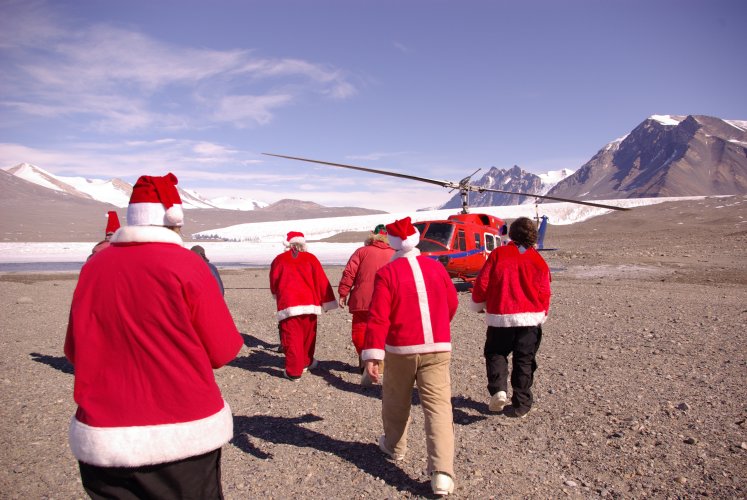
The Xmas crew heads back to the helo. Photographer unknown.
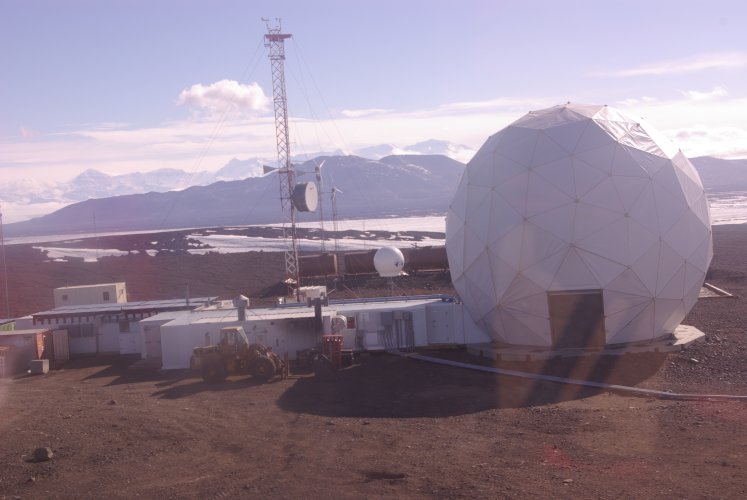
The Black Island retransmission facility that provides McMurdo's primary satellite connection. Photographer unknown.
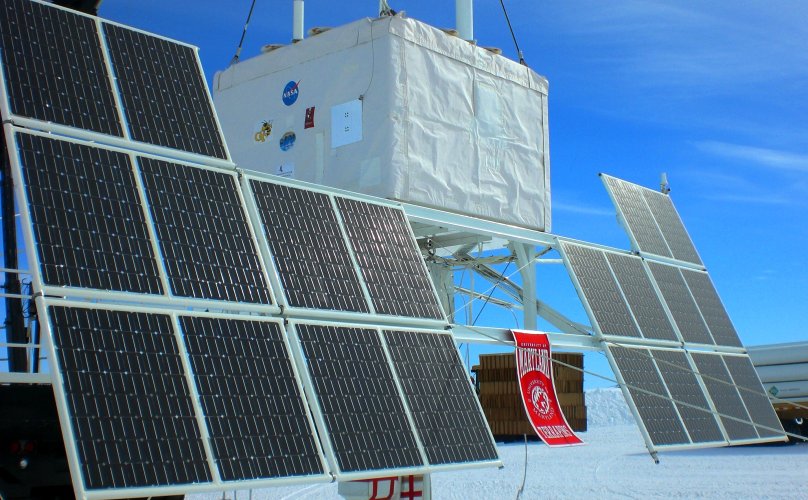
Research ballons are a common sight around McMurdo and are launched all year round. This summer we launched 4 larger ballons carrying various atmospheric and astrophysical instruments. Shown above is the scientific payload of the first of these larger ballons, the CREAM ballon. Photo by Patricia Ballou.
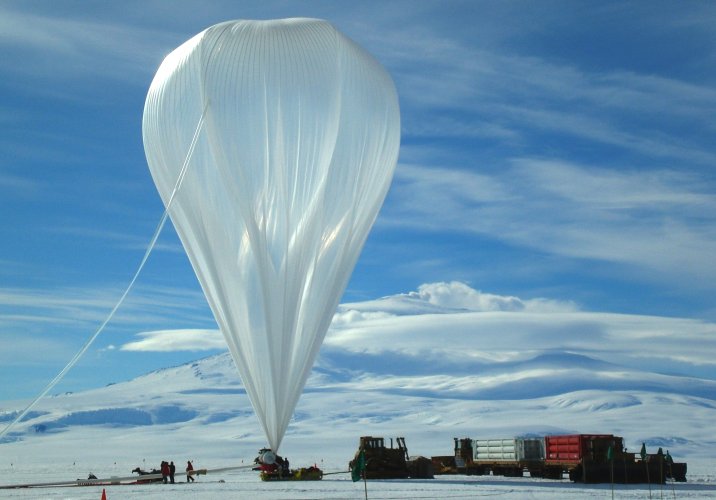
CREAM after being inflated with Helium. The part of the ballon seen here is only the upper tip, as the ballons are inflated only a fraction of the way at ground level, and when they rise to their cruising altitudes of 100,000+ feet the helium will expand dramatically at the lower air pressure and will fill the entire ballon. The largest of the ballons this year is bigger than the Louisiana Superdrome when the helium is totally expanded. Photo by Patricia Ballou. Note the filename she gave the photo: CREAM Filled.
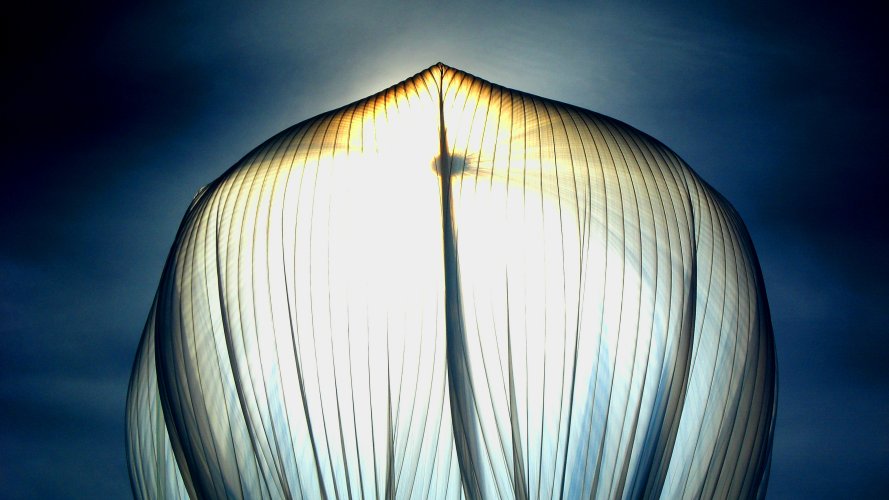
Great photo of the CREAM ballon by Patricia Ballou. The air above Antarctica spends most of the year rotating in a counter-clockwise circle and after reaching cruising altitude the ballons will circle the continent several times. When enough data has been collected, or if the ballons start to drift towards sea, the instrument payloads will detach from the ballons and the payloads will descend by parachute. The ballons are never recovered, but the payloads will be tracked down, disassembled, and flown back to McMurdo using our Twin Otter aircraft.
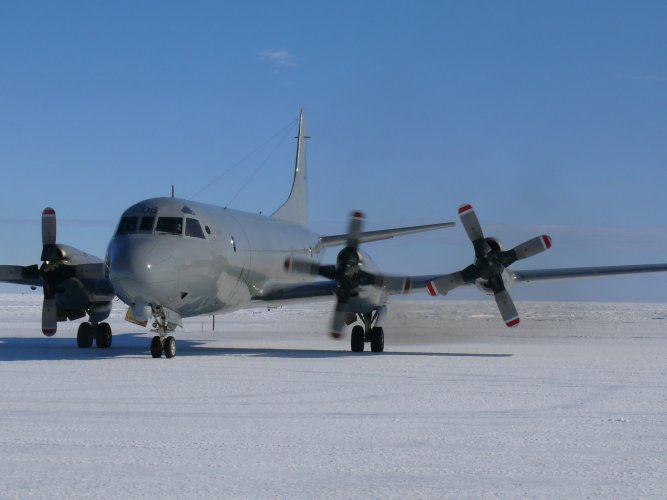
McMurdo is visited on rare occasion by a Kiwi Orion P-3 that patrols the Southern Ocean looking for illegal fishing etc. Photographer unknown.
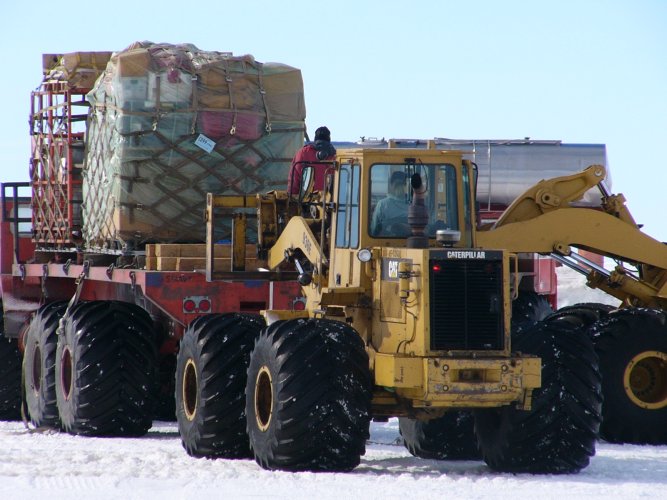
Moving airborne cargo. Note the huge tires on the loader which are needed to keep a grip on ice. Photo by Sean Sullivan.
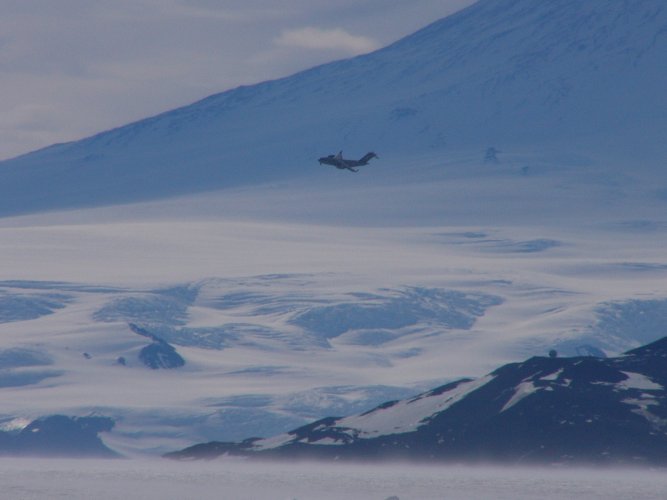
C-17 on approach to Pegasus Field. Photo by Sean Sullivan.
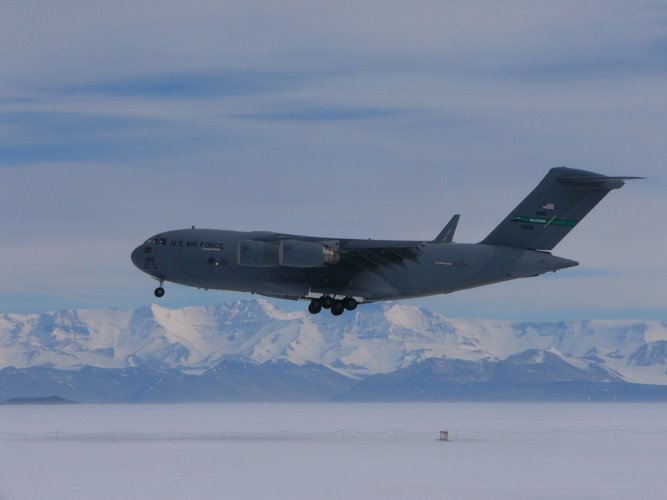
C-17 landing at Pegasus Field. Photo by Sean Sullivan.
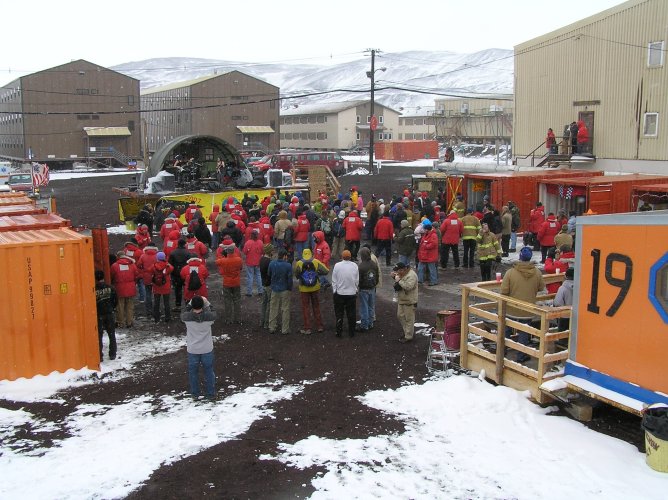
At the end of every year McMurdo holds a day-long outdoor concert called Ice Stock. We had about a dozen bands play this year, and despite temperatures below freezing and a regular breeze, the concert went well. Photographer unknown.
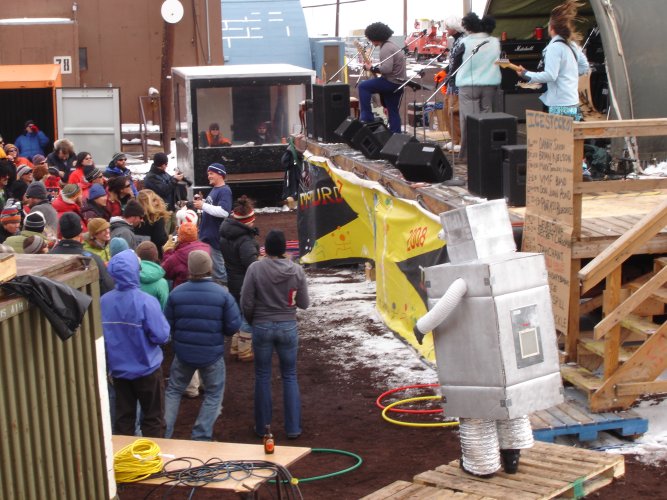
No concert is complete without a dancing robot. Photo by Jo Jo Schwartz.
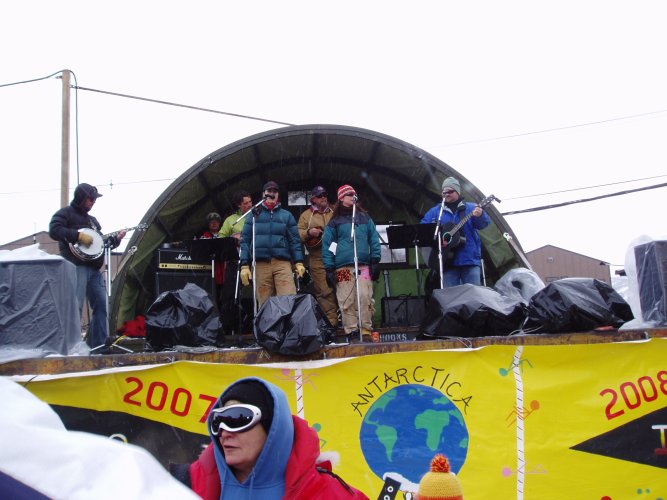
One of the last bands, Phat Ass Bluegrass. Photographer unknown.
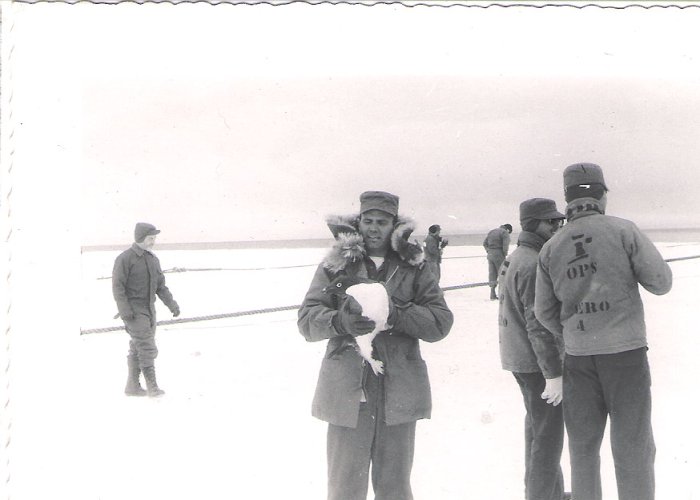
Above is a photo of some Navy guys from the Deep Freeze II mission in 1957. Photographer unknown.
Return to main page



















